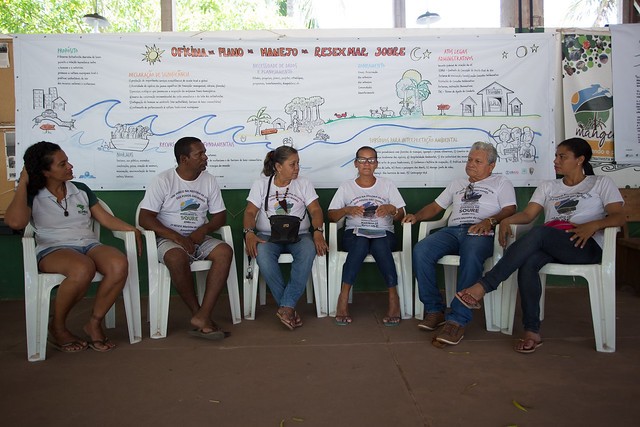Speeches Shim

Brazil has several types of protected areas; each with its own unique regulatory framework and administration. Currently, USAID/Brazil works with indigenous and quilombola lands and other protected areas such as national forests, national parks, and extractive reserves and forests (which allow sustainably managed timber and non-timber products to be utilized by local communities), as well as state and municipal parks and reserves. Indigenous and quilombola lands also include activities that facilitate traditional people’s capacity and rights to directly manage their biologically diverse resources, while also improving their livelihoods.
USAID provides technical assistance through the United States Forest Service to the Instituto Chico Mendes para a Conservação da Biodiversidade (ICMBio), the government body responsible for managing Brazil’s protected area system through a system of “Conservation Units.” The program builds long-term capabilities of local partners and communities, as well, to improve conservation practices that incorporate improved science, technology and innovative approaches. Key objectives are the development of public use models for national parks; identification and development of sustainable value chains of timber and non-timber forest products; the design and streamlining of area management plans, and training and management of forest fires and other threats.
USAID also works jointly with the Fundação Nacional do Índio, FUNAI, the government body that manages Brazil’s indigenous lands, to implement Brazil’s National Policy for Territorial and Environmental Management of Indigenous Lands, ensuring the protection and conservation of both natural and cultural resources within Indigenous Lands that improve the well-being of present and future generations of Indigenous Peoples. Through specialized technical assistance, USAID supports the development and implementation of life plans and Territorial and Environmental Management Plans (PGTAs). Such plans are dynamic instruments used to increase the value of indigenous assets (e.g. their natural resources, biological diversity, cultural heritage, etc.) and restore, recover, and/or better manage their lands. PGTAs also provide guidance for public policies and internal and external agreements. They facilitate open dialogue with the Government and foster partnerships and institutional arrangements that contribute to the development and sustainability of Indigenous lands and peoples. Ensuring their implementation is critical to biodiversity conservation and Indigenous People’s management and rights.


Comment
Make a general inquiry or suggest an improvement.